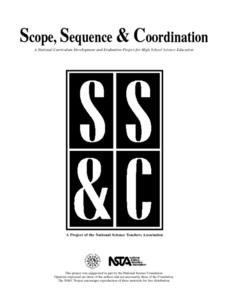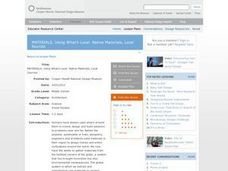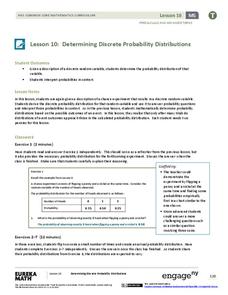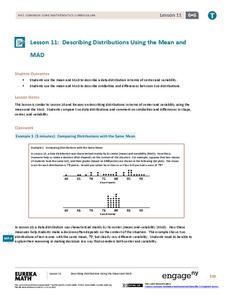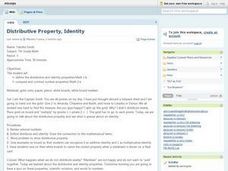Curated OER
Multiplication: Bugs Can Multiply, So Can I!
Develop multiplication skills with your class. Youngsters will visualize multiplication as repeated addition. Then they will create a multiplication bug book and discover arrays as a strategy for multiplication problem solving....
Curated OER
Energy Resources: Where Are They and How Do We Get Them?
Future energy engineers visit several stations, each one dedicated to a different alternative source of energy. They describe how solar energy is converted into other forms of energy, the patterns of distribution of energy resources in...
Texas Education Agency (TEA)
Production, Distribution, and Other Business Operations
It's all good! Using the informative resource, scholars learn about the difference between goods and services. After researching inventions that have changed lives for the better, partners work together to design a service or product...
Curated OER
Limiting Factors for Populations
The "Bottled Bacteria" activity instructions are a bit unclear, but the remaining activities investigating limiting factors in ecosystems are well-written. Learners model the exosystem of a bear and a herd of deer. They set up a...
Curated OER
Crude Conversation
Students analyze text and maps in determining the effect the world's energy resources have on human society, and make charts illustrating at least three ways each resource makes life easier for human society.
Curated OER
MATERIALS, Using What’s Local: Native Materials, Local Sources
Middle schoolers consider the development of different societies. In this environmental building lesson, students consider local resources and how societies choose to use them. Middle schoolers use their findings to design a 'green'...
Curated OER
Exploring the Normal Curve Family
Young scholars find different characteristics of the bell curve. In this statistics lesson, students analyze a family for a specific characteristic. They identify the shape, center, spread and area as they analyze the characteristic of...
EngageNY
Determining Discrete Probability Distributions 2
Investigate how long-run outcomes approach the calculated probability distribution. The 10th installment of a 21-part module continues work on probability distributions from the previous lesson. They pool class data to see how conducting...
EngageNY
Describing Distributions Using the Mean and MAD II
The 11th lesson in the series of 22 is similar to the preceding lesson, but requires scholars to compare distributions using the mean and mean absolute deviation. Pupils use the information to make a determination on which data set is...
EngageNY
Measuring Variability for Skewed Distributions (Interquartile Range)
Should the standard deviation be used for all distributions? Pupils know that the median is a better description of the center for skewed distributions; therefore, they will need a variability measure about the median for those...
EngageNY
Probability Distribution of a Discrete Random Variable
Learn how to analyze probability distributions. The sixth installment of a 21-part module teaches pupils to use probability distributions to determine the long-run behavior of a discrete random variable. They create graphs of probability...
EngageNY
Describing Center, Variability, and Shape of a Data Distribution from a Graphical Representation
What is the typical length of a yellow perch? Pupils analyze a histogram of lengths for a sample of yellow perch from the Great Lakes. They determine which measures of center and variability are best to use based upon the shape of the...
EngageNY
Matrix Multiplication Is Distributive and Associative
Learn the ins and outs of matrix multiplication. After discovering the commutative property does not apply to matrix multiplication in a previous lesson in the series, pupils now test the associative and distributive properties. The...
Curated OER
Chapter 3 Part 2 Test
Learners multiply 9 pairs of fractions and mixed numbers. They divide on six problems. They solve four whole number problems using the distributive property. There are 20 problems total on the page.
Lorain County Community College
Review of Equations
Dive head-first into this instructional activity full of inverse operations, distributing, and combining like terms. Let your learners try these challenging problems to test their skills with multi-step equations and simplifying...
Lorain County Community College
Solving Equations Using the Division Property
Go from easy to challenging with a worksheet full of different problems designed for solving equations. Your mathematicians will be able to start small with one- and two-step equations and work their way up to multi-step equations. The...
EngageNY
Estimating Probability Distributions Empirically 2
Develop probability distributions from simulations. Young mathematicians use simulations to collect data. They use the data to draw graphs of probability distributions for the random variable in question.
College Board
Is That an Assumption or a Condition?
Don't assume your pupils understand assumptions. A teacher resource provides valuable information on inferences, assumptions, and conditions, and how scholars tend to overlook these aspects. It focuses on regression analysis, statistical...
Curated OER
I Feel Renewed!
Students participate in a simulation of the equal and unequal distribution of the earth's renewable resources. They discuss renewable resources and how food resources can increase and decrease, participate in the simulation, and analyze...
Curated OER
Distributive Property
Students use the distributive property to solve problems. After listening to an illustration of the property, they take notes. Students solve problems during note taking and after class. They create their own examples of the...
Curated OER
Distributive Property, Identity
Seventh graders review rational numbers. After listening to a story, 7th graders define the distributive and identity properties. They observe examples of each property and play a race game to practice identifying the properties. ...
Curated OER
Simplify Expressions using Distributive Property
In this online math worksheet, students simplify expressions by using the Distributive Property. This excellent resource allows the students to check their answers, and to get "hints" should they run into difficulties. A terrific...
Curated OER
Simplifying Distribution Worksheet
In this simplifying distribution activity, students solve problems with one variable using the distributive property. They place their answers in the answer box provided on the internet. Students are able to view step-by-step problems...
EngageNY
The Multiplication of Polynomials
If you can multiply multi-digit integers, you can multiply polynomials. Learners use an area model to compare multiplying numbers to multiplying polynomials. They progress to using the distributive property.





